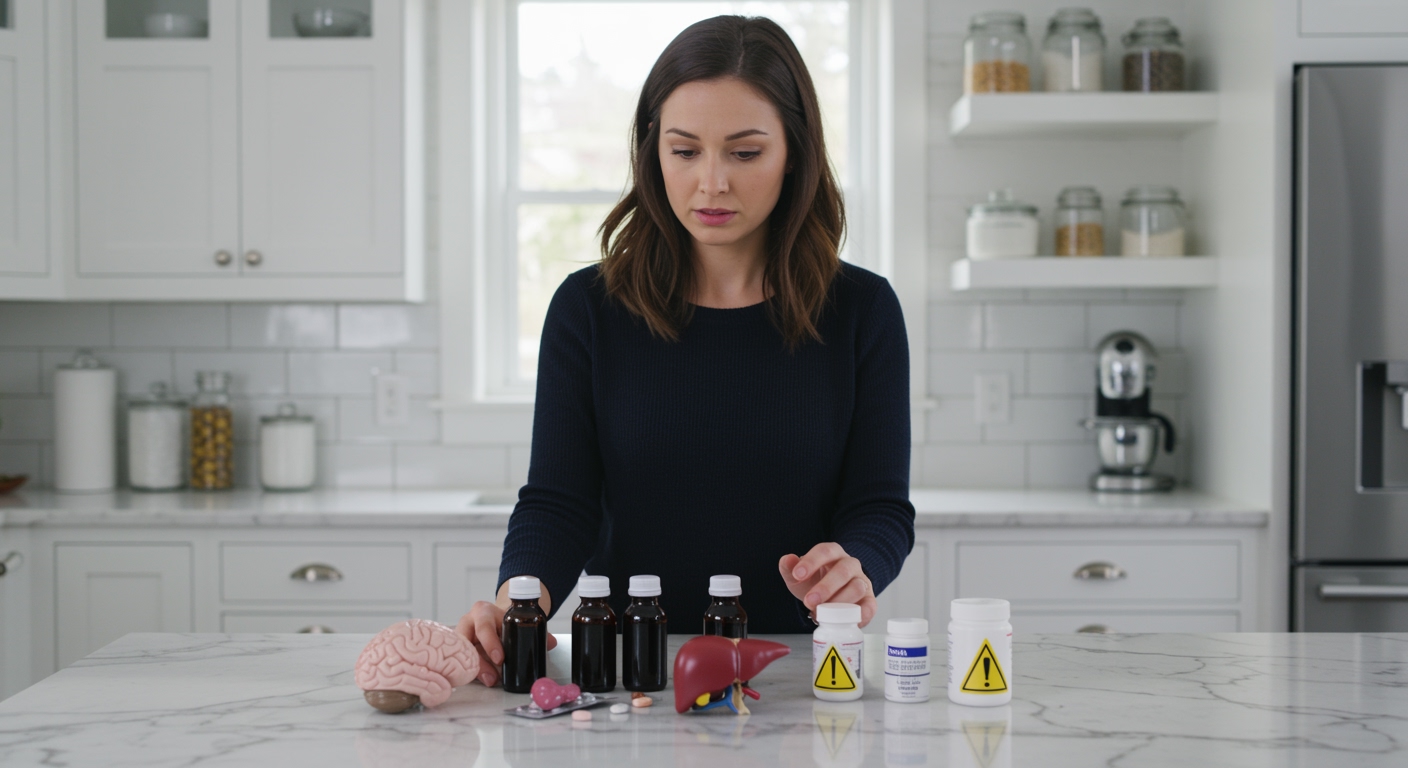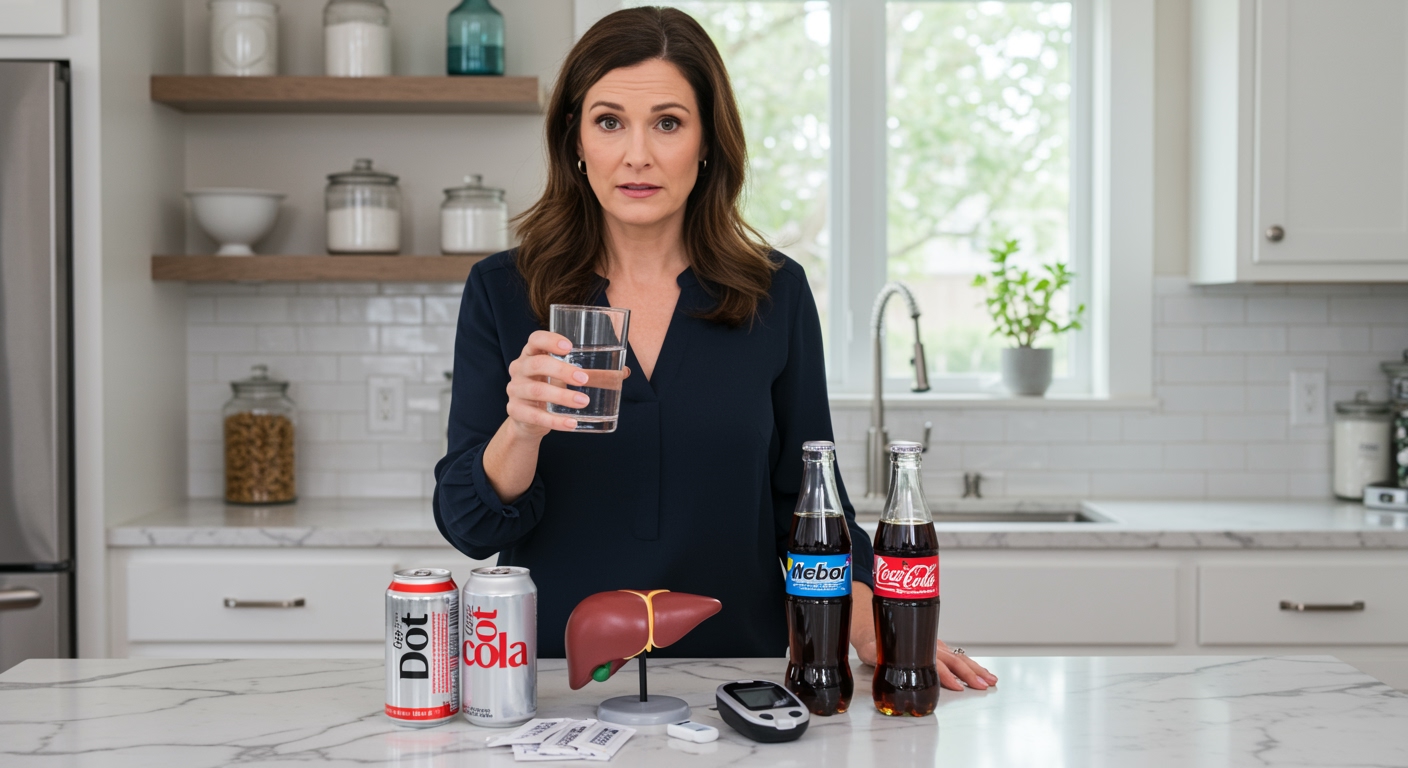✪ Key Highlight: Feel Free wellness drink contains kratom and kava that cause severe addiction with withdrawal symptoms similar to opioids.
Introduction
A wellness drink called Feel Free is causing serious addiction problems across America.
This trendy tonic contains kratom and kava, two psychoactive plant extracts that can create physical dependence and dangerous withdrawal symptoms.
Hi, I’m Abdur, your nutrition coach and today I’m going to analyze this alarming news about Feel Free addiction that health experts are warning about.
What Makes Feel Free So Addictive?
Feel Free contains two main ingredients that affect your brain chemistry in powerful ways.
Kratom acts on the same brain receptors as opioid drugs, which means it can cause physical dependence just like prescription painkillers.
When kratom binds to these opioid receptors in your brain, it triggers the release of dopamine and other feel-good chemicals.
Your brain quickly adapts to this artificial stimulation and starts requiring more kratom to feel normal.
Kava works differently by affecting your brain’s GABA receptors, which control anxiety and relaxation.
While kava is not physically addictive like kratom, it can cause psychological dependence and has been linked to serious liver damage with regular use.
The combination of these two substances creates a powerful effect that many users find impossible to resist.
✪ Fact: Neither kratom nor kava is regulated by the FDA, meaning there are no safety standards for these ingredients.
How Quickly Does Feel Free Addiction Develop?
Many Feel Free users report becoming dependent within just a few weeks of regular use.
Jasmine, a former user, shared that she started with one bottle per day but quickly escalated to three bottles daily just to function normally.
She said she would wake up feeling like she was in withdrawal and needed Feel Free immediately to feel normal again.
This pattern is typical of physical dependence, where your body requires the substance to maintain basic functions.
Dr. Lawrence Weinstein from American Addiction Centers explains that kratom withdrawal can be very uncomfortable and similar to opioid withdrawal.
Users often increase their intake to avoid feeling tired, anxious, or irritable when the effects wear off.
This creates a dangerous cycle where people need more and more Feel Free to avoid withdrawal symptoms.
✪ Pro Tip: If you need any substance daily to feel normal, this is a clear sign of physical dependence.
What Are The Withdrawal Symptoms?
Feel Free withdrawal symptoms can be severe and last for days or even weeks.
Common withdrawal symptoms include insomnia, irritability, anxiety, nausea, sweating, and muscle aches.
These symptoms occur because your brain has adapted to the presence of kratom and kava.
When you stop using Feel Free, your brain struggles to produce normal levels of dopamine and other neurotransmitters on its own.
Jasmine described experiencing mood swings and difficulty focusing during her withdrawal period.
Many users also report trouble sleeping and increased anxiety that can interfere with daily activities.
The severity of withdrawal symptoms depends on how much and how often you used Feel Free before stopping.
✪ Note: Withdrawal symptoms can become overwhelming and may require professional medical support to manage safely.
Who Is Most At Risk?
Young adults are particularly vulnerable to Feel Free addiction, especially those seeking alternatives to alcohol.
Many people start using Feel Free thinking it’s a healthier option than drinking alcohol or using other substances.
Social media is filled with posts praising Feel Free’s effects without mentioning the serious addiction risks.
People with a history of addiction or mental health issues face even higher risks when using Feel Free.
Dr. Weinstein emphasizes that individuals with previous substance abuse problems should avoid kratom-containing products entirely.
Those dealing with anxiety, depression, or chronic pain may also be more likely to develop dependence on Feel Free.
The drink’s marketing as a natural wellness product makes people assume it’s safe, which increases the risk of casual use turning into addiction.
✪ Pro Tip: Just because a product is marketed as natural or sold legally does not mean it’s safe for everyone.
How To Get Help For Feel Free Addiction
Professional help is often necessary to safely overcome Feel Free addiction.
Treatment options include medical detoxification, residential therapy, outpatient programs, and support groups.
Medical detox helps manage withdrawal symptoms under professional supervision.
During detox, healthcare providers can prescribe medications to reduce anxiety, nausea, and other uncomfortable withdrawal symptoms.
Therapy programs help address the underlying reasons why people started using Feel Free in the first place.
Support groups connect people with others who have experienced similar addiction struggles.
If you’re trying to quit on your own, stay hydrated, eat nutritious foods, and practice stress-reducing techniques like deep breathing or meditation.
✪ Note: Attempting to quit Feel Free without professional support can be dangerous due to severe withdrawal symptoms.
The Bottom Line
Feel Free is not the harmless wellness drink it appears to be, and addiction experts are seeing more cases of kratom dependence linked to this product.
Natural does not always mean safe, especially when it comes to substances that alter brain chemistry and create physical dependence.
I’d love to hear your thoughts on this concerning trend in the wellness industry – have you or someone you know had experience with Feel Free or similar products? Please share your questions or feedback in the comments below.
References
At NutritionCrown, we use quality and credible sources to ensure our content is accurate and trustworthy. Below are the sources referenced in creating this article:
- New Choices Treatment Centers: Feel Free Addiction Treatment
- Pyramid Healthcare: Is Feel Free Really Safe
- Phoenix Rising Recovery: Feel Free Drink What You Need to Know
- Atlas Behavioral Health: Understanding Feel Free Tonic Withdrawal Symptoms
- Psychology Today: Some Wellness Drinks May Contain Opiate-Like Substance





